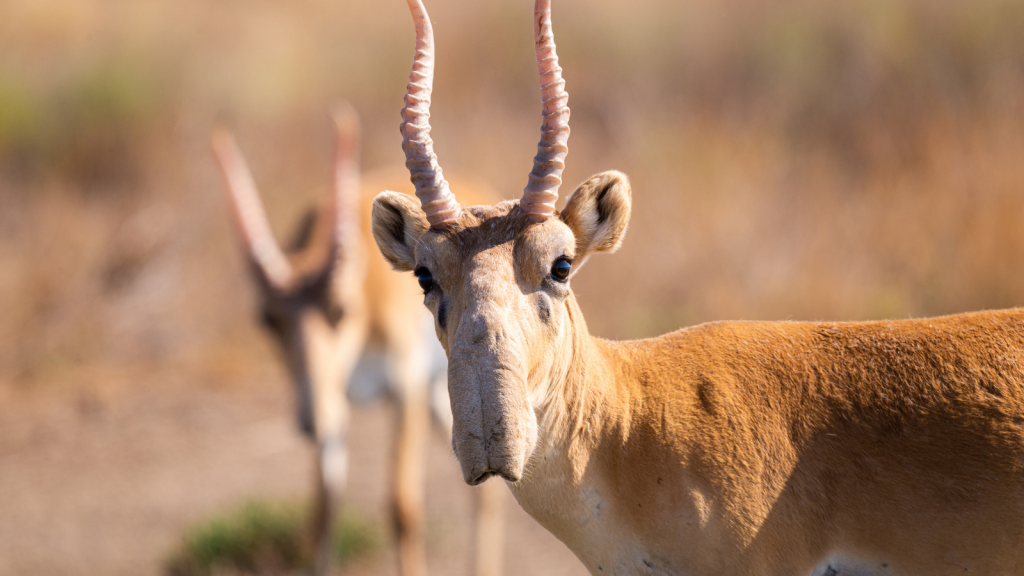The saiga antelope is a remarkable creature that once roamed the Eurasian steppes in vast herds. With its distinctive trunk-like nose and prehistoric appearance, this animal seems to have leapt straight from the pages of a fantasy novel. Despite facing near-extinction in the 1920s, saiga populations rebounded, only to crash again in recent decades. Today, conservationists are working tirelessly to protect these unique antelopes. Here are 16 fascinating facts about the saiga that might surprise you.
Their Nose Isn’t Just for Show
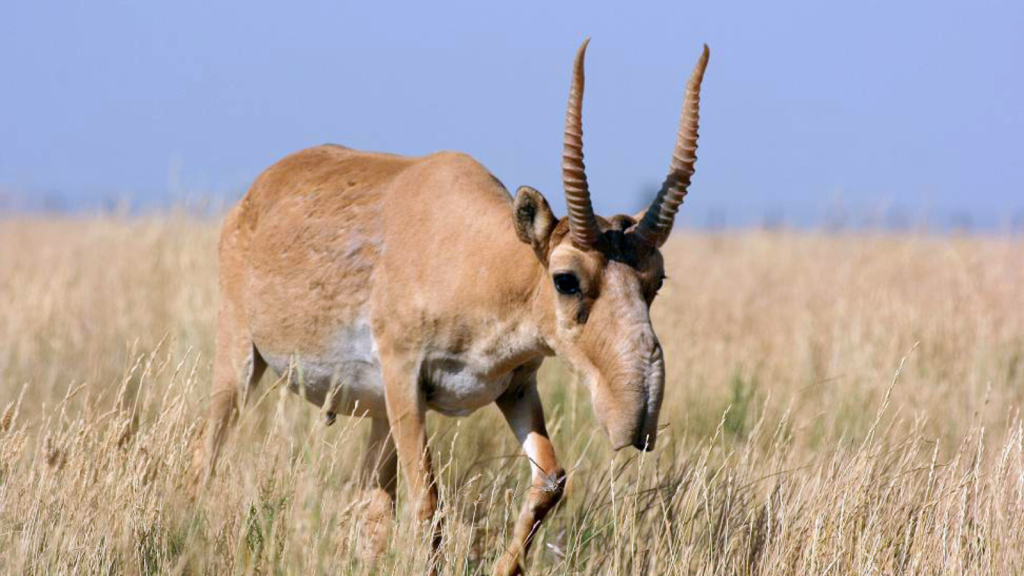
The saiga’s most striking feature, its bulbous nose, serves multiple purposes. It helps filter out dust in their dry habitat, warms cold air before it reaches the lungs, and even amplifies the males’ calls during mating season. The nose can also inflate to produce loud snorts, which saigas use to communicate with each other over long distances.
Saigas Can Outrun a Racehorse
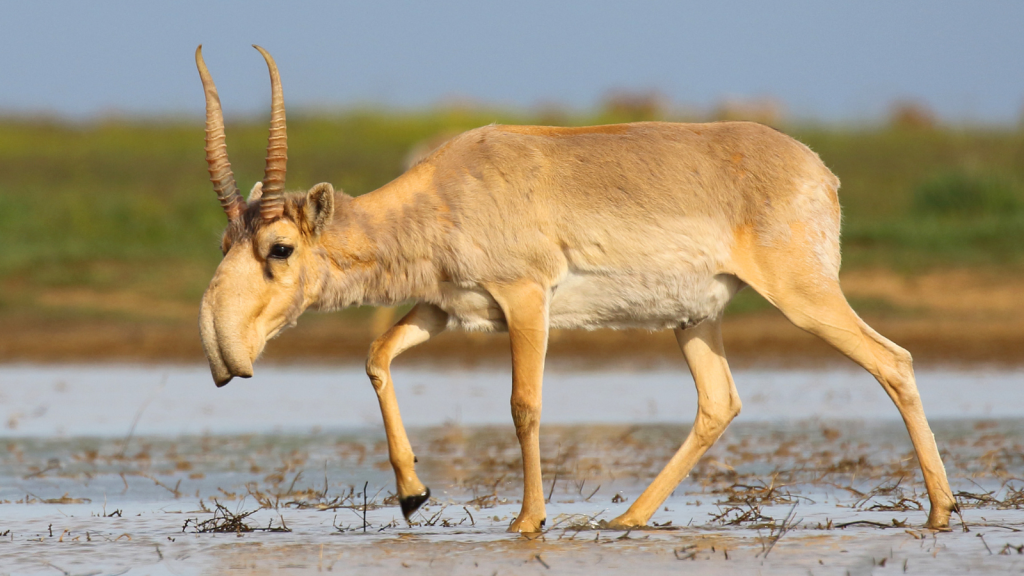
These antelopes are built for speed, capable of running at up to 50 miles per hour in short bursts. This impressive pace helps them escape predators like wolves and eagles. Their endurance is equally remarkable, as they can maintain speeds of 40 miles per hour for extended periods.
They’re Older Than Woolly Mammoths
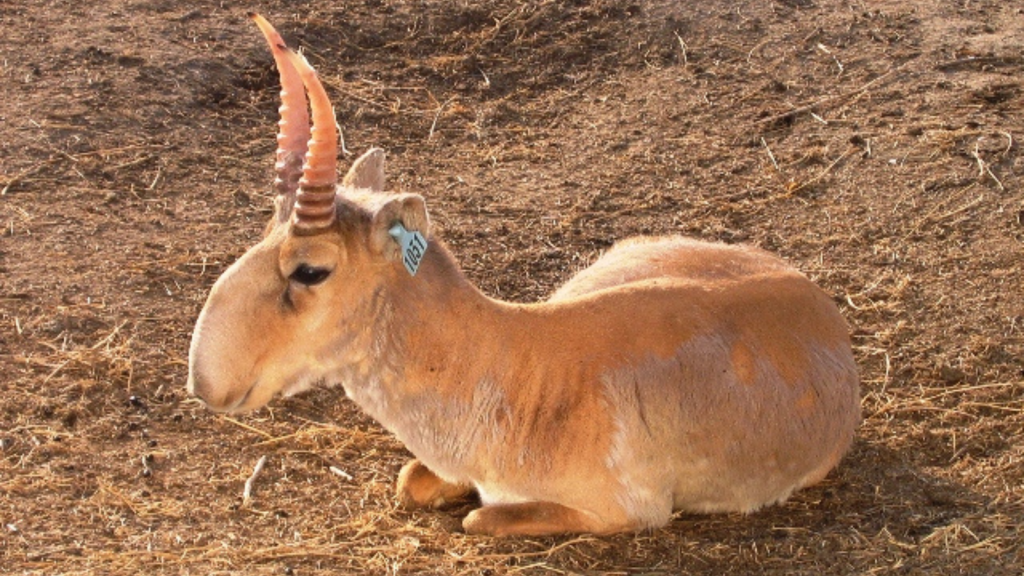
Saiga antelopes have been around for a staggeringly long time. Fossil records show they existed before woolly mammoths, with some dating back to the Pleistocene epoch, over 12,000 years ago. Their ancient lineage makes them a living link to Earth’s prehistoric past.
Saigas Give Birth to Twins
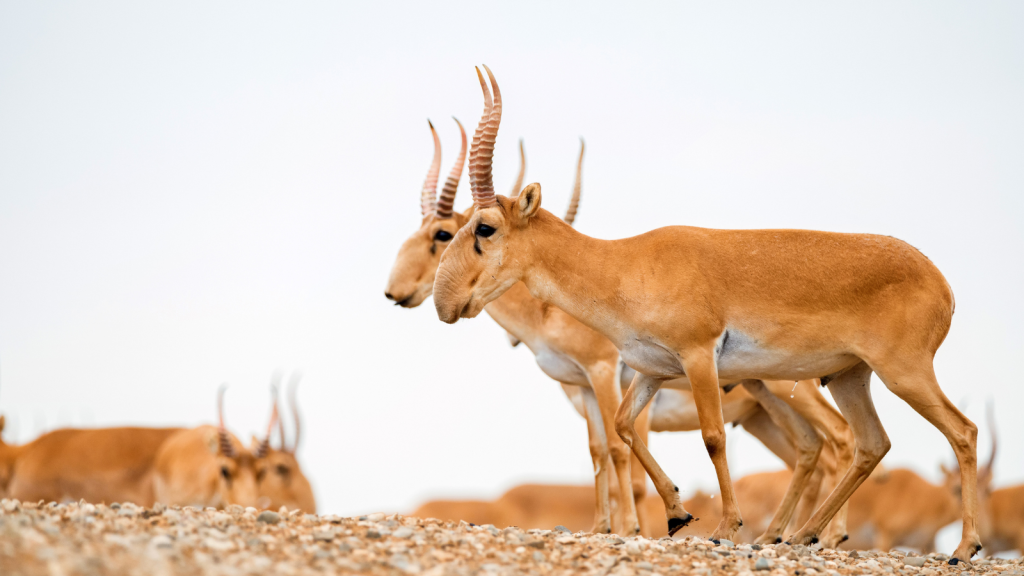
Unlike many other antelope species, saigas often give birth to twins. This high reproductive rate has helped the species survive despite facing numerous threats throughout history. Female saigas can also give birth at just one year old, further boosting population growth potential.
Their Horns Are Prized in Traditional Medicine
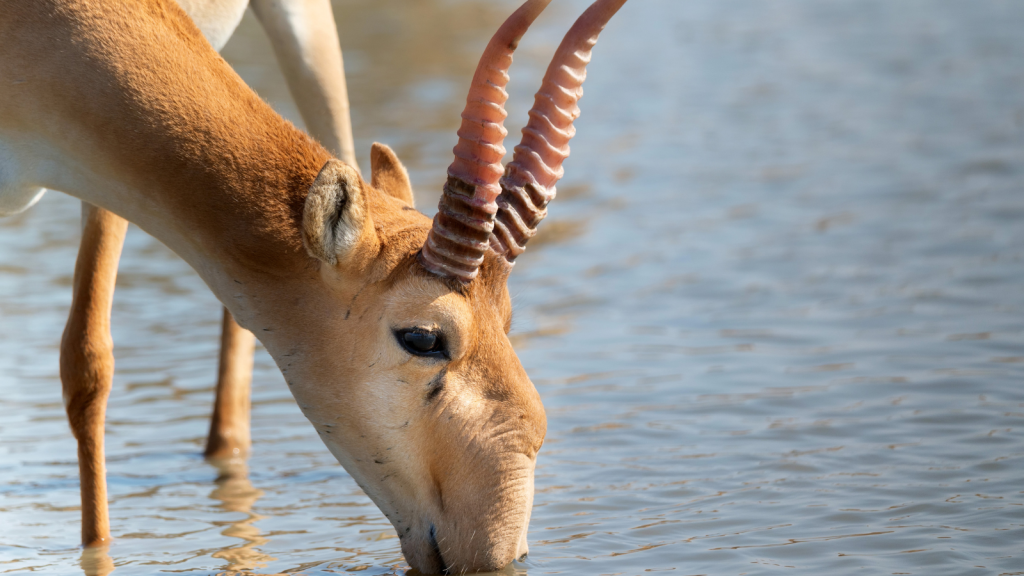
Male saigas have translucent amber-coloured horns that are highly valued in traditional Chinese medicine. This demand has unfortunately led to widespread poaching. A single horn can fetch up to $150 on the black market, making it a lucrative but illegal trade.
They Can Swim
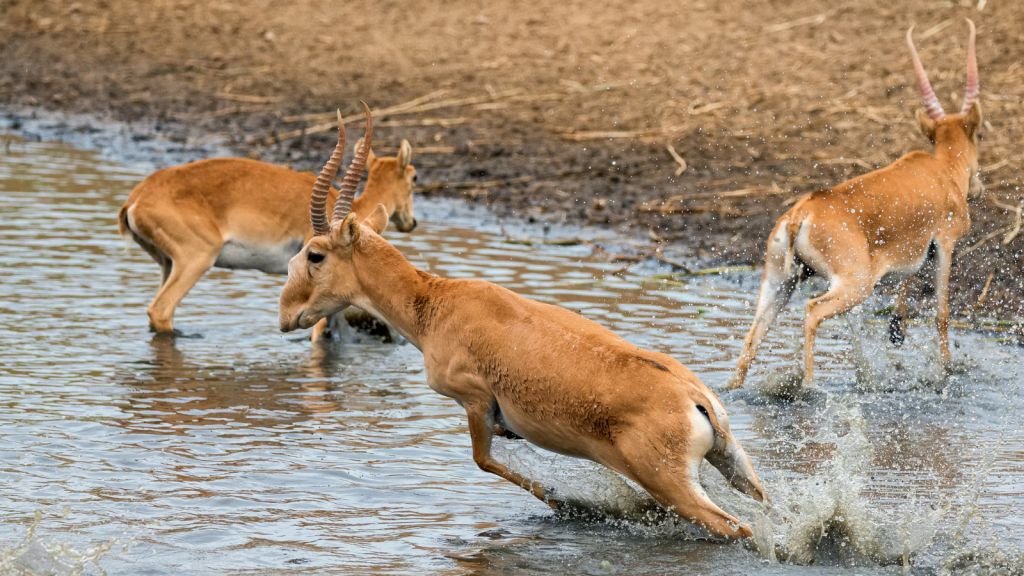
Despite living in dry steppe environments, saigas are capable swimmers. They’ve been observed crossing rivers and even small lakes when necessary. This ability allows them to access food and escape predators in wetland areas within their range.
Saigas Have Built-in Nose Warmers
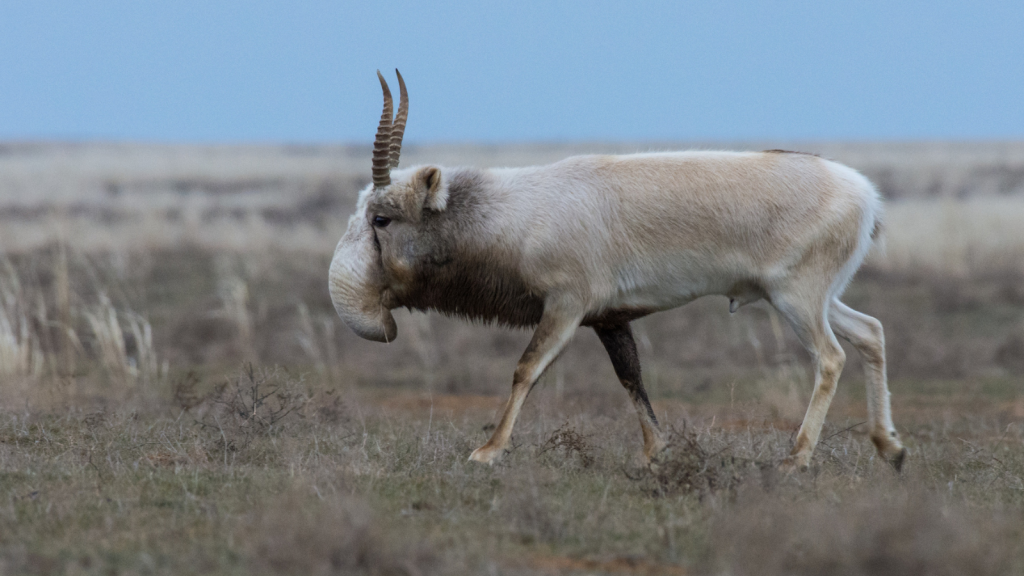
The saiga’s large nose has an unexpected benefit in cold weather. It can be tucked into the mouth, warming the air before it’s breathed in. This adaptation helps them survive in the harsh, frigid winters of the Eurasian steppes, where temperatures can plummet to -40°C.
They’re Crucial for Steppe Ecosystems
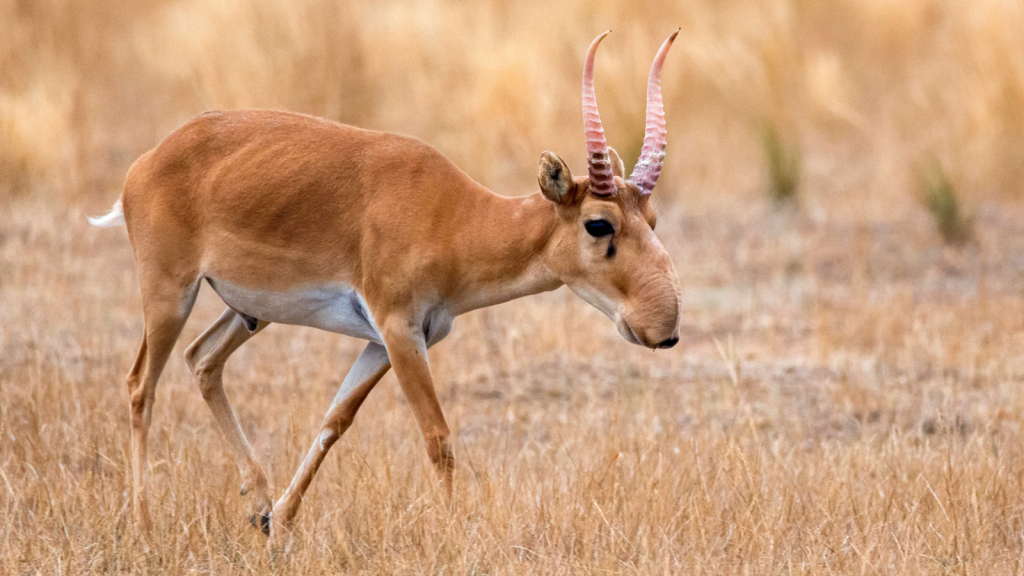
Saigas help maintain the balance of their grassland homes. Their grazing prevents any one plant species from dominating, promoting biodiversity in these vast landscapes. They also disperse seeds through their dung, aiding in plant reproduction across the steppes.
Saigas Can Drink Salty Water
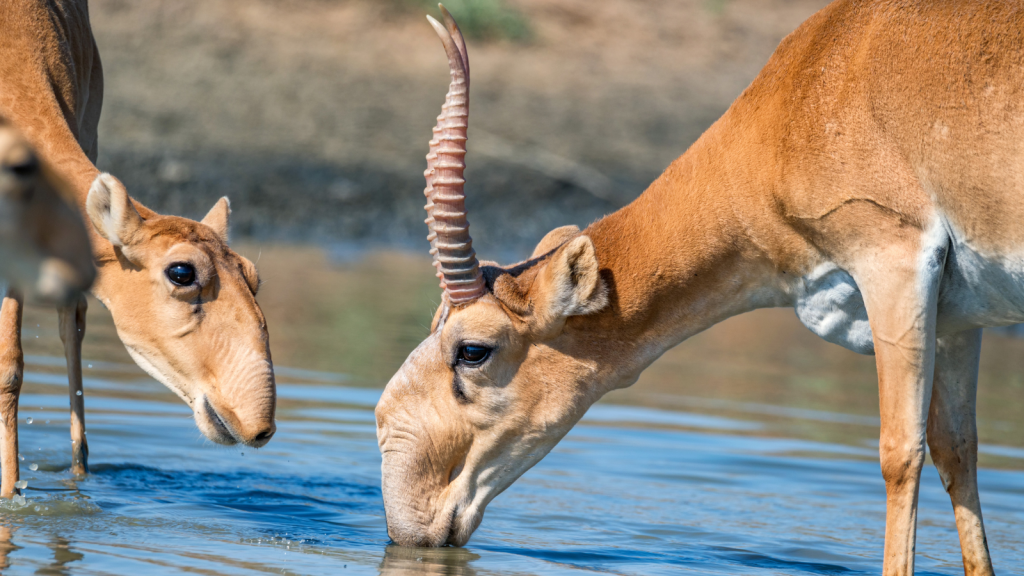
These antelopes have adapted to survive in harsh environments where fresh water is scarce. They can drink salty and brackish water that would make other animals ill. This ability allows them to utilise water sources that other animals can’t, reducing competition for resources.
Their Populations Can Crash Overnight
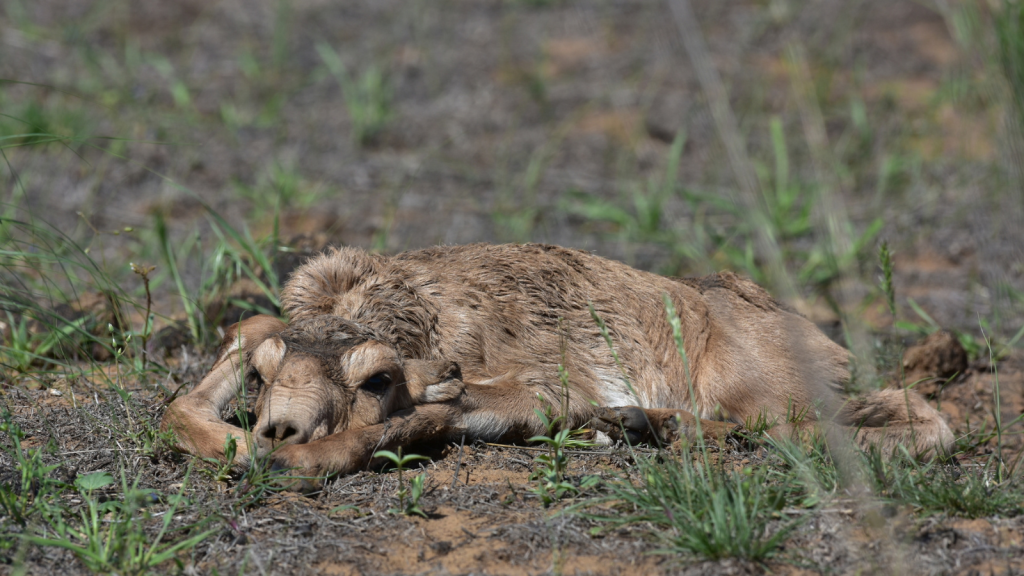
In 2015, over 200,000 saigas died in just three weeks due to a bacterial infection. This event highlighted how vulnerable the species is to sudden population crashes. Scientists believe that climate change may have played a role in this mass die-off, making the bacteria more virulent.
They’re Fashion Victims
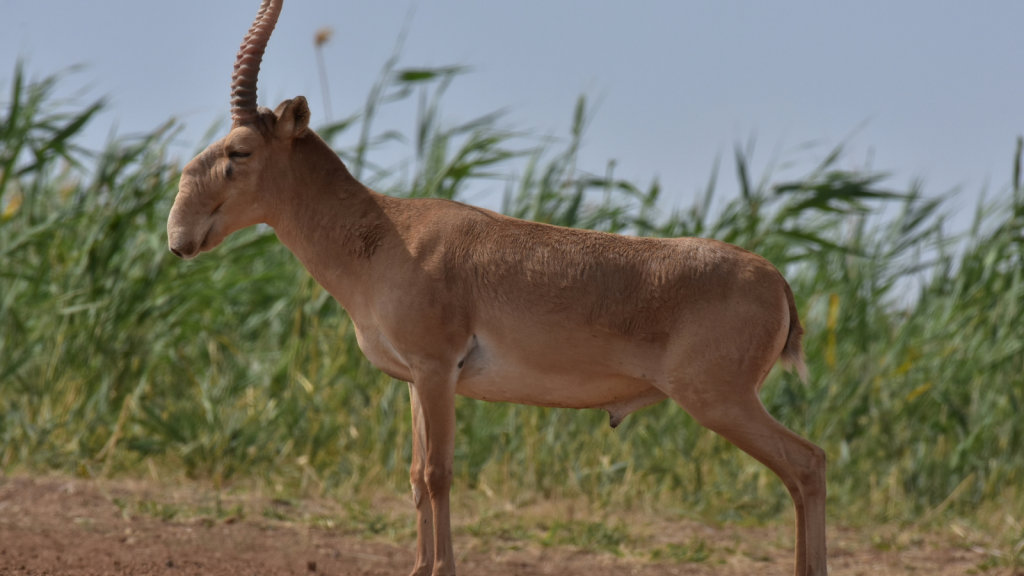
During the Soviet era, saiga antelopes were hunted for their horns and skin, which were used to make traditional boots. This led to a significant decline in their numbers. At one point, saiga horn was even used as a cheaper alternative to rhino horn, further driving demand.
Saigas Are Champion Migrators
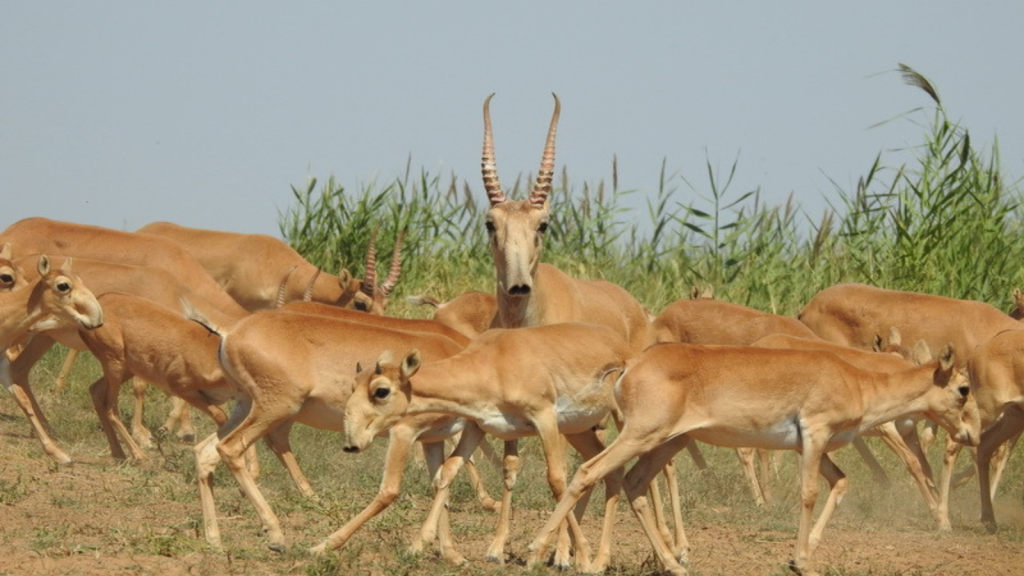
These antelopes undertake long migrations, travelling up to 1,000 kilometres between their summer and winter grazing grounds. These journeys are crucial for their survival, allowing them to find food and avoid harsh weather conditions throughout the year.
They Have a Unique Defence Mechanism
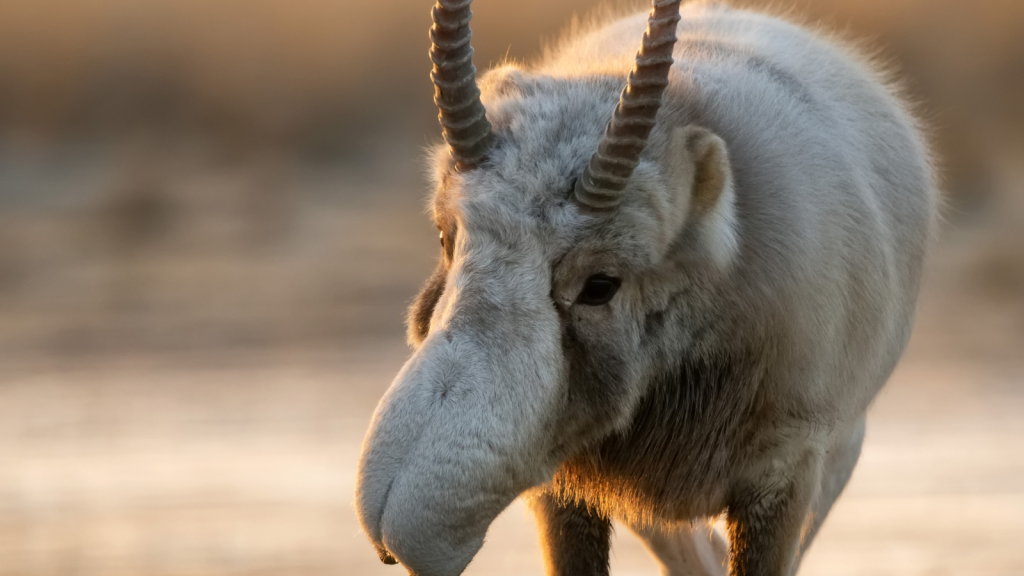
When threatened, saigas can force air through their large noses to create a high-pitched alarm call, warning the herd of danger. This call can be heard from great distances, allowing the herd to react quickly to potential threats.
Saiga Calves Are Precocious

Baby saigas are up and running within minutes of birth. This early mobility is crucial for survival in their open habitat. Calves can keep up with the herd within hours, an essential skill in a landscape where predators are always on the lookout for easy prey.
They’re Living Fossils
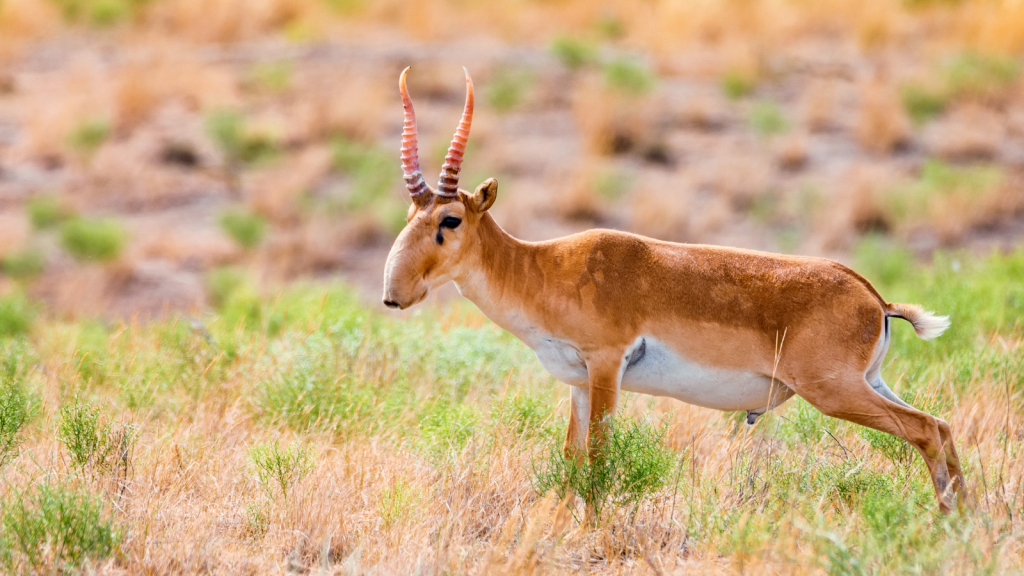
The saiga’s appearance has changed little over millennia. Looking at one is like peering back in time to the Ice Age. Their unique features, particularly their trunk-like nose, have remained largely unchanged for thousands of years, making them a true evolutionary marvel.
Conservation Efforts Are Showing Promise
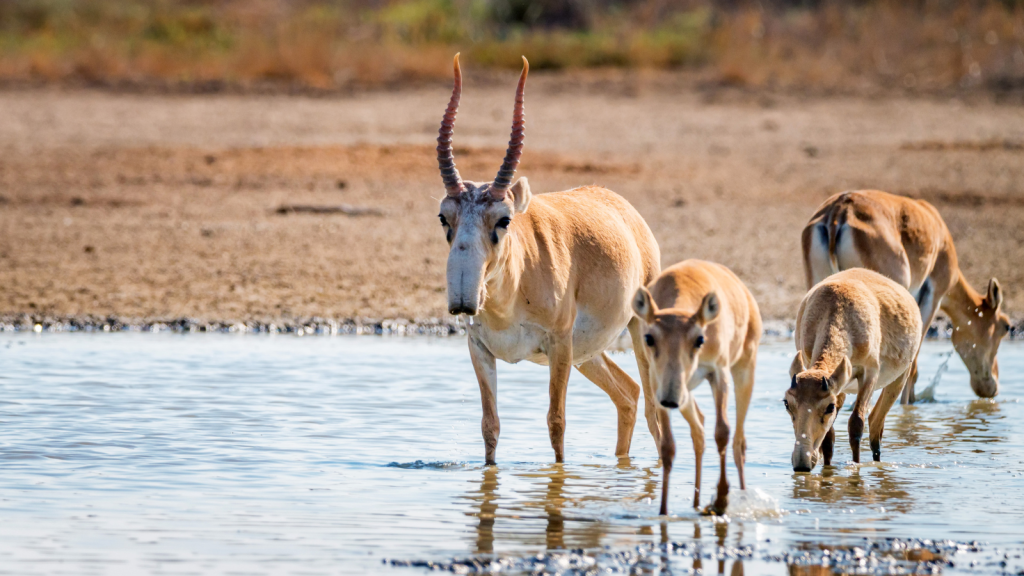
Thanks to dedicated conservation work, some saiga populations are beginning to recover. It’s a glimmer of hope for this ancient and fascinating species. Initiatives like protected areas, anti-poaching patrols, and captive breeding programmes are all contributing to this positive trend.
Becky is a fervent wildlife enthusiast and pet care expert with a diploma in canine nutrition. Her love for animals stretches beyond the domestic, embracing the wild tapestry of global fauna. With over a decade of experience in animal welfare, Becky lends her expertise to OutlandishOwl through insightful articles, captivating wildlife information, and invaluable guidance on pet nutrition. Her work embodies a deep commitment to understanding the intricate lives of animals and a passion for educating others on sustaining natural habitats. Becky's hands-on conservation efforts and her knack for translating complex dietary science into practical pet feeding tips make her an indispensable voice for creatures great and small.

